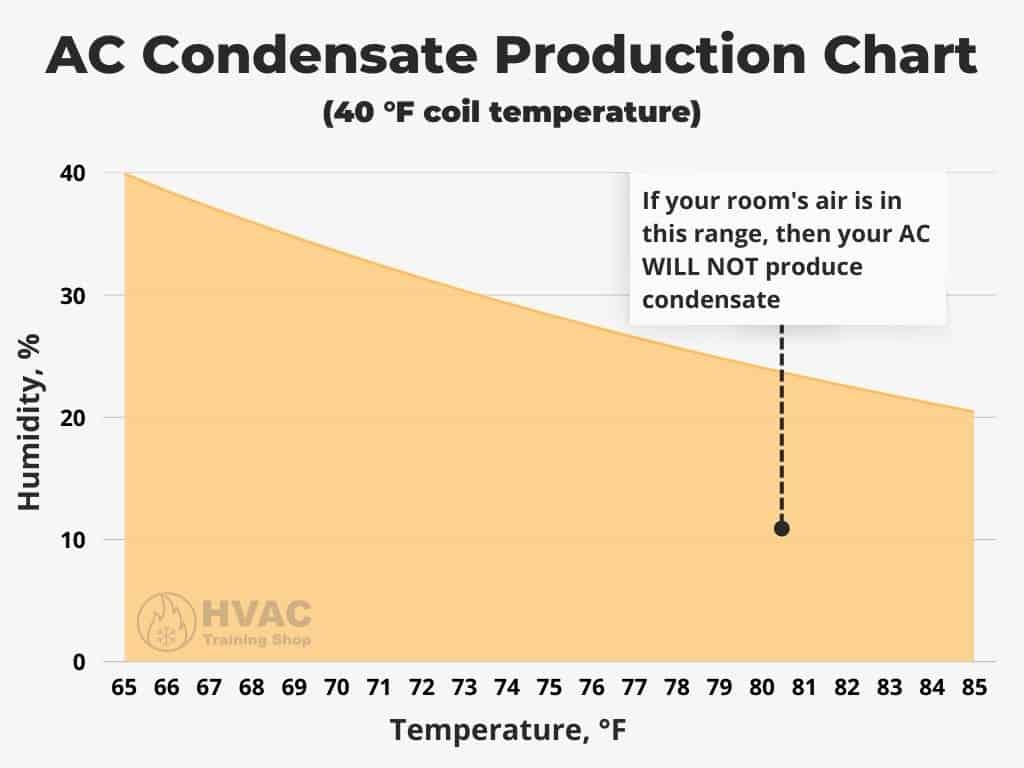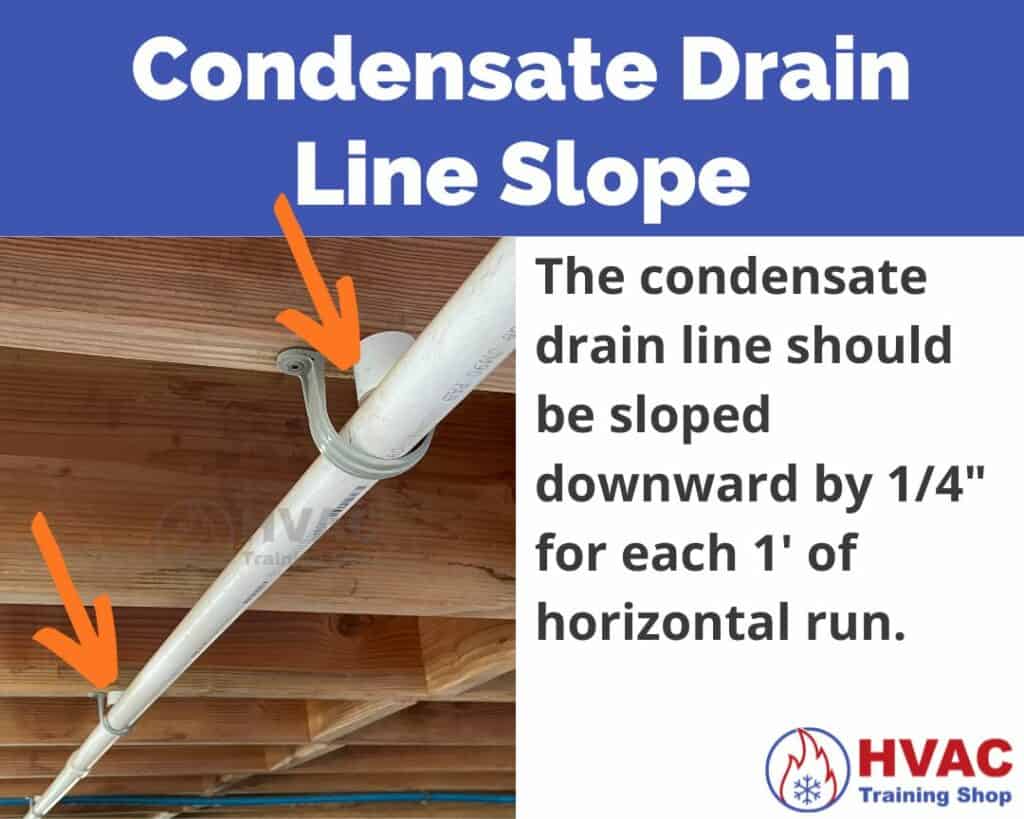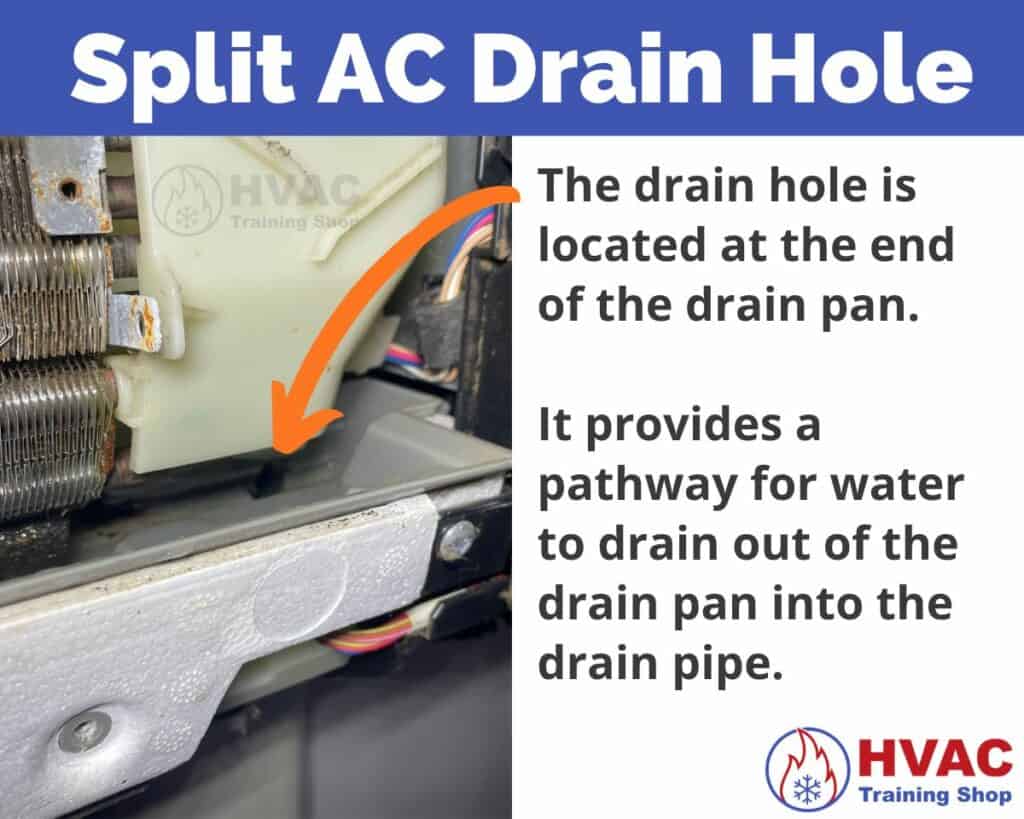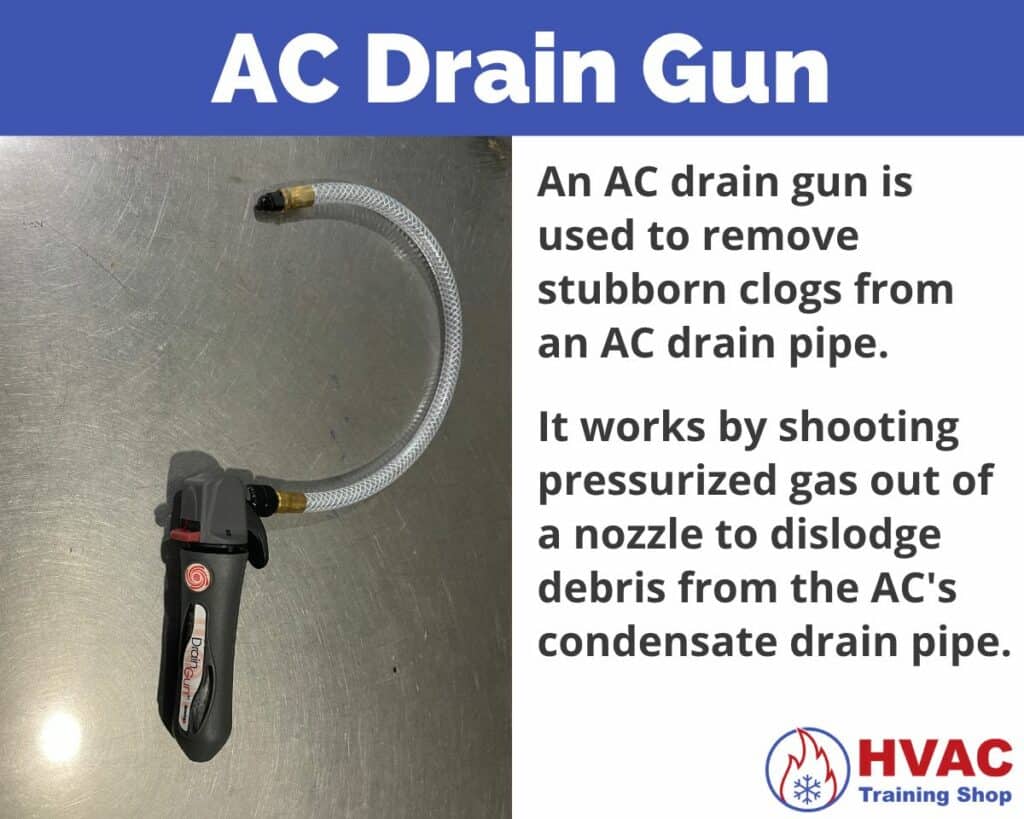Is there no water coming out of your AC’s drain pipe?
That could be a cause for alarm… or completely normal—depending on the situation.
If the humidity in your home is low, it is normal for no water to come out of your AC drain pipe.
However, if the humidity is at medium or high levels, something is wrong with your AC system if no water is coming out of its drain pipe.
In this article, I’ll go over what you should do if there’s no water coming out of your AC drain pipe.
I’ll also provide some data on when you should expect water to come out of your AC’s drain pipe, and some tips on how to troubleshoot drain pipe issues.
What you should do if there’s no water coming out of your AC drain pipe
If you find that there’s no water coming out of your AC’s drain pipe, you’ll need to find the source of the issue.
Here’s what you should do if there’s no water coming out of your AC drain pipe:
- Check the temperature and humidity in your home
- Check your condensate drain pipe for clogs
- Check if your drain pipe is disconnected
- Check if your drain pipe is sloped
- Check if your drain pan is dirty
- Check if your AC’s evaporator coil is frozen
- Change your dirty air filter
Check the temperature and humidity in your home
If there’s no water coming out of your AC’s drain pipe, the first thing you should do is check the temperature and humidity level in your home. If the dew point of the air in your home is below the temperature of your AC coil, your AC won’t produce condensation.
If the humidity in your home is low, then water won’t condense out of the air when you run your AC.
Why does that happen?
In order for your AC to produce condensate, the dew point of the air in your home must be above the temperature of your AC coil.
Most AC evaporator coils are around 40 °F, so if the dew point temperature is below that, then your AC won’t produce condensate.
The dew point temperature is heavily influenced by humidity—if the relative humidity is low, then the dew point temperature will be low as well.
To put it in simpler terms—if the air in your home is dry, then no water will come out of your AC’s drain pipe. This is normal in hot, dry climates.
Here’s a chart that you can use to check if your AC will produce condensation:

Check your condensate drain pipe for clogs
A clogged pipe is one of the most common causes of no water coming out of an AC drain pipe.
Drain pipe clogs can happen suddenly or gradually.
For example, a leaf on the outside of your home may get into your drain pipe and clog it suddenly.
Or slime growth will gradually clog your drain pipe.
Here are some causes of a clogged condensate drain pipe:
- Slime growth in condensate pipe
- Dirt and debris clogging the pipe inside the unit
- Dirt and debris clogging the pipe from the outside of your home
- Insects climbing into the pipe and getting stuck
If your condensate drain pipe is clogged, I recommend checking both ends of the pipe for obvious clogs and removing them by hand if possible.
First, check the end of the pipe (usually outside of your home) to see if anything is blocking the pipe’s discharge.
Next, check inside your air handler to see if anything is clogging up the pipe inside your unit.
You also need to open up the clean-out port and check if there are any clogs in the P-trap.
For more information about cleaning out your AC’s condensate drain line, check out my article below:
Check if your drain pipe is disconnected
If your AC’s condensate drain pipe is disconnected, then no water will come out of the AC drain pipe outside.
Check all connection points for your condensate drain pipe, starting at the air handler unit.
If there are any leaks or disconnected pieces of drain pipe, then no water will come out of the end of the drain pipe.
If you find any disconnected pieces of drain pipe, then reconnect them.
If you find any cracked or broken pieces of drain pipe, then you’ll need to replace them.
Check if your drain pipe is sloped
If your AC’s drain pipe isn’t sloped properly no water will come out of it.
Condensate moves through your drain pipe by the force of gravity, so the pipe must be sloped in a slight decline away from your AC unit.
The rule of thumb for the slope of an AC condensate drain pipe is ¼” per 1 foot of drain pipe.

For example, if you have a run of drain pipe that’s 4’ long, then the end of the run should be at least 1” lower than the start of the run.
You also need to make sure that your drain pipe is supported. If your drain pipe is just hanging there, then it will sag down over time.
The sags in the drain pipe create additional traps in the drain pipe. These additional traps will prevent your condensate from draining if pockets of air get trapped inside of them.
Check if your drain pan is dirty
A dirty drain pan may clog up your AC’s drain system and cause no water to come out of the drain pipe.
In some AC systems, the primary drain pan is the first place that the condensate drains into.
However, the drain system might get clogged up if the primary drain pan fills up with slime or rust.
Open up the access to your AC’s evaporator coil and find the primary drain pan. It’s located directly underneath the evaporator coil.
Clean out all the sludge from the drain pan and ensure the connection to the drain pipe is clean too. Rust and other debris will sometimes clog up the drain pan’s connection to the drain pipe.
Check if your AC’s evaporator coil is frozen
An AC unit with a frozen evaporator coil may have no water come out of its drain pipe. This happens because the condensate freezes into a block of ice instead of draining out of the unit.
If your AC coil is frozen, you’ll most likely notice that your AC isn’t cooling your home.
A frozen AC coil indicates an airflow or refrigerant problem with your AC system.
You need to thaw out the coil and correct the airflow or refrigerant problem before your AC will work properly again.
Check out my guide below if your AC’s evaporator coil is freezing up:
Change your dirty air filter
A dirty air filter can cause no water to come out of your AC drain line. This happens when the excess negative pressure sucks the condensate back into your unit when the filter is clogged up.
A dirty air filter is one of the most overlooked causes of no water coming out of an AC drain pipe.
Why does that happen?
When your AC’s air filter gets clogged up, your blower creates excess negative pressure that sucks in air from all the nooks and crannies in your air handler.
This causes your blower to suck in water from your P-trap and makes it harder for condensation to flow freely out of your drain pipe.
This effect is exacerbated if the vent isn’t clear or if the drain pipe is already gunked up.
So make sure you change your dirty air filter and clean out your drain pipe—especially the P-trap and vent.
What To Do When Your Split AC Isn’t Dripping Water Outside
Split system air conditioners are slightly different than the central air conditioners that are found in most American homes.
If you have a split system AC, there is a slightly different process if it isn’t dripping water out of its drain pipe.
Here is what you should do:
- Unclog the drain pan hole in the split AC
- Clean out the drain pan in the split AC
- Add drain pan tablets to the split AC
Unclog the Drain Pan Hole in the Split AC
The air filters in split ACs are only capable of filtering out larger dust particles. That means that the evaporator coils in split ACs are much more prone to molding up and getting dirty.
All of that dirt, mold, and slime build up inside the split AC means that the condensate drain system in the split AC is much more prone to getting clogged up versus a central AC system.
The drain hole in a split AC is prone to getting clogged up since it is the single pathway between the drain pan and the drain pipe. Dirt and slime tend to congregate around the drain hole’s entrance and clog up the condensate drain system.

If you remove the plastic cover on the front of the split AC indoor unit, you can clean out the drain pan hole. Once the drain pan hole is clear, water should be able to flow freely out of the drain pan and into the drain pipe.
If water won’t drain out of your split AC’s drain pan hole, then the pipe is clogged. Fortunately, there is a tool called an AC drain gun that can be used to dislodge stubborn clogs from your AC’s condensate drain system.

Clean Out the Drain Pan in the Split AC
While you have your indoor unit opened up, you should also take the time to clean out the entire drain pan.
Use a cloth to remove all the grime and slime from the interior of your split AC’s drain pan. You might need to pour some water in the drain pan to wash all the debris away after you clean out the pan.
Add Drain Pan Tablets to the Split AC
After you spend all that time cleaning out your split AC’s drain pan and unclogging its drain hole, you want to make sure that you don’t have to do that again, right?
That’s where drain pan tablets come in.
Drain pan tablets are small tablets that go inside your AC’s drain pan. They dissolve slowly over time, releasing a chemical into the AC’s condensate that prevents biological contaminants from growing in your AC’s condensate drain system. They do a great job of preventing mold and slime growth, so your AC drain pipe won’t get clogged up again.
The only downside is that drain pan tablets eventually dissolve away, so you’ll need to add them every month or so. But that’s a small price to pay for the peace of mind of not having a clogged drain pipe disrupt your home’s cooling system.




Read over your articles pertaining to AC primary drain not functioning. I think before I attempt to access the drain pan inside the air handler, I’ll remove the PVC P-trap and check for blockage then reassemble. My secondary drip pan rusted out and needed replacement. I’ve been dealing with excessive condensate dripping into drip tray.